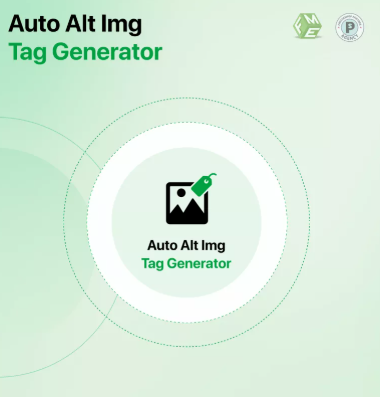Unlock 6 Best PrestaShop Upload File Features Now

The digital marketplace is evolving rapidly, and customer expectations are changing just as fast. One key feature that can significantly enhance the shopping experience on your PrestaShop site is the ability for users to upload files. From customized t-shirt designs to identity documents, file uploads are now central to a variety of e-commerce sectors.
But in the era of mobile-first browsing, your upload file features must be responsive, seamless, and intuitive. A clunky, non-optimized system doesn’t just slow down the checkout process—it pushes mobile users away. The modern PrestaShop upload file feature is more than a basic input field. It’s a strategic UX component that, when done right, improves efficiency, builds trust, and helps your store stand out.
Let’s explore six of the best features that any PrestaShop file upload system must offer in 2025 to meet mobile-first standards and user expectations.
1. Mobile-Responsive Upload Interfaces
Today, over 60% of e-commerce traffic comes from mobile devices. If your upload fields don’t display properly or respond smoothly to touch gestures, you’re risking abandoned carts.
Why It Matters: A responsive design ensures that file upload forms adjust to every screen size—from a 6-inch phone to a 12-inch tablet. Mobile-first implementation means users can select, drag, or snap files using their device camera without unnecessary zooming or scrolling. Every successful upload increases the likelihood of a completed purchase.
2. Real-Time Upload Progress and Feedback
Shoppers need clarity. They want to know their file is uploading, how long it will take, and whether it was received successfully. Real-time progress bars, confirmation messages, and error indicators help create transparency.
UX Impact: Real-time feedback helps reduce confusion, prevents duplicate uploads, and reassures customers that their actions are being processed. Especially on slower mobile networks, this feature creates a smoother experience and increases trust.
3. Multiple File Type and Size Support
Not every customer will be sending the same file types. A flexible system must handle images, PDFs, documents, or compressed folders with different size limits depending on the product or service.
Flexibility Benefit: This is especially important for mobile users who might be working with compressed images or PDFs on the go. Your upload file module should support drag-and-drop uploads and auto-compression to enhance performance across devices.
4. Conditional Upload Fields for Customization
Customization is a growing trend in e-commerce. Offering dynamic upload fields that appear only when relevant helps reduce visual clutter and guides customers through a streamlined purchase flow.
Example: A customer selecting a “custom gift box” might then see a prompt to upload a message card. This conditional logic adapts well on mobile devices, helping users focus on only what matters.
5. Post-Purchase Upload Option
Sometimes users don’t have the right file at the time of purchase. Instead of forcing them to stop the checkout, let them upload their file later through an account dashboard or confirmation email link.
Why It’s Smart: This reduces drop-offs at checkout and gives customers the flexibility they need. In mobile-first design, fewer steps at the purchase stage increase conversions. Offering upload later aligns perfectly with fast, intuitive shopping flows.
6. Seamless Admin File Management
Behind every smooth customer experience is an efficient back office. Managing user-submitted files should be as intuitive as the front-end process. A robust PrestaShop file manager makes that possible.
Efficiency Gains: Admins can sort, search, preview, and assign uploaded files to specific orders without opening multiple tabs or hunting through folders. The best systems offer mobile-friendly dashboards so store managers can respond to orders even when away from a desk.
The Role of Responsive Design in Upload Features
Being present online is no longer enough. In 2025, it’s about how well your e-commerce site adapts to mobile-first expectations. With responsive design, your upload file modules automatically adjust to all screen types, ensuring optimal functionality and speed.
This matters not just for UX, but for search engine optimization too. Google’s mobile-first indexing treats your mobile version as the primary one. If your upload interface breaks or slows down the page, it will directly impact your rankings. Keeping file upload features lightweight and responsive ensures a better performance score and longer session times.
Clean URL structures also play a role. Instead of displaying complicated strings, make sure upload-related pages or forms use readable, structured URLs that make sense to users and search engines alike.
Best Practices for PrestaShop File Upload UX
Here are some strategic best practices to follow when implementing upload features:
-
Test across devices: Use tools like Google’s Mobile-Friendly Test to catch any UI issues.
-
Limit friction: Reduce the number of fields and steps, especially for mobile users.
-
Secure uploads: Always validate file types and add size restrictions to protect your site from harmful content.
-
Use cache and compression: These reduce load time, improving both SEO and user experience.
-
Optimize backend workflows: The more efficiently your team can access and use uploaded files, the faster you can fulfill orders.
Preparing Your Store for the Mobile-First Future
As e-commerce continues its shift toward mobile dominance, customer expectations will only grow. Uploading files should be as easy as adding an item to the cart. If it takes too long, looks confusing, or fails on mobile, users will move on.
By integrating responsive, fast, and intuitive upload systems, you’re not just adding a feature—you’re strengthening your entire business strategy. The right tools help you respond faster, serve customers better, and boost satisfaction, all while staying aligned with Google’s search algorithms and ranking factors.
Whether you’re running a personalization-focused store or handling B2B orders, upgrading your upload feature set is no longer optional—it’s foundational to long-term growth.











